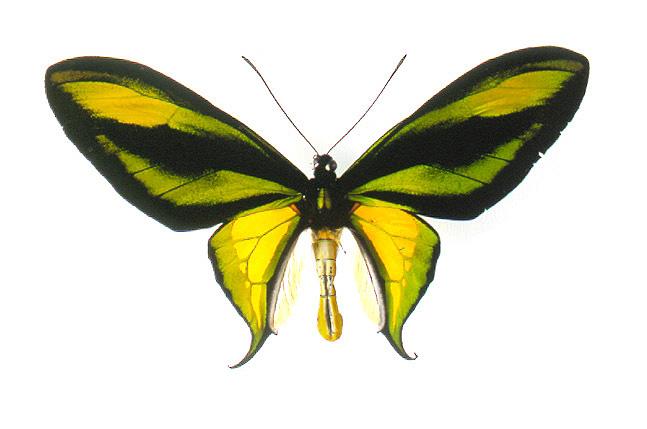Lepidoptera - The Butterflies and Moths

The order Lepidoptera is comprised of the butterflies and moths, with the number of known species climbing towards 200,000. Fossil records are scarce and only go back to the late Cretaceous, some 100 to 130 million years ago. It is widely accepted that Lepidopterans evolved long before that, from an insect ancestor similar to caddisflies (Trichoptera). Although primitive moths in the suborder Zeugloptera still retain chewing mouth parts, most moths and butterflies have long since developed a proboscis with which to feed. The order’s name, Lepidoptera, is derived from Greek words meaning, "scale-wing". This refers to the arrangement of tiny overlapping scales (like shingles on a roof) that color the surface of most Lepidopterans wings. These scales contain the pigments (available in every color of the rainbow) which create so many startling patterns of color and inexplicable beauty. When modified to reflect only one wavelength of light, they become responsible for the iridescence seen on some species, like the Morpho butterflies. It is a sad reality that most people believe that butterflies are beautiful and moths are ugly. Take a look at a Sunset Moth and you’ll realize that belief couldn’t be more false. Moths and butterflies are viewed to be as different as night and day, when in fact they are very closely related. Castniid moths look so much like butterflies that they were once thought to be direct ancestors of the skippers (the most primitive of the butterflies and directly related to the moths). All moths and butterflies begin their lives as caterpillars. In order to complete metamorphosis, they must pupate. Moths will often spin cocoons (something which butterflies cannot do) but many simply pass through this stage as bare pupae buried in soil. In contrast, it is butterflies who alone create the fabulous structures known as chrysalids. While butterflies may have the upper hand as far as color diversity they only make up about 10% of the Lepidoptera. Moths are diverse and far more spectacular as a whole. There are many beautiful moths and anyone looking for colorful Lepidoptera should not overlook them.